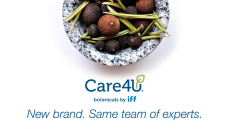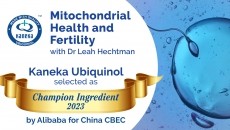Berries cut lower type 2 diabetes and CVD risk, claims new research
Sucrose increases postprandial blood glucose concentrations, and diets with a high glycaemic response may be associated with increased risk of obesity, type 2 diabetes and CVD.
According to the World Health Organization (WHO), approximately 150 million people have diabetes mellitus worldwide, and this number may double by the year 2025 due to population growth, ageing, unhealthy diet, obesity and sedentary lifestyle.
Berries are excellent sources of various polyphenols, such as anthocyanins, flavonols, phenolic acids, ellagitannins and proanthocyanidins, said the researchers from the University of Kuopio in Finland.
And, several in vitro and in vivo studies, said the authors, have suggested that polyphenols may influence carbohydrate digestion and absorption and thereby postprandial glycaemia.
“Polyphenols have inhibited intestinal a-glucosidase (maltase and sucrase) activity and glucose transport in vitro,” states the article.
The Finnish researchers hold that reduced rates of sucrose digestion and/or absorption from the gastrointestinal tract are the most probable mechanisms underlying the delayed and attenuated glycaemic response from consumption of polyphenols.
They said that in previous human studies, beverages rich in polyphenolic compounds have shown beneficial effects on postprandial glycaemia: “Delayed absorption of glucose after consumption of apple juice and coffee and attenuated glycaemic response to sucrose consumed in chlorogenic acid-enriched coffee have been reported.”
Method
In the present study, the Finnish researchers said they investigated the glycaemic effect of a berry puree made of bilberries, blackcurrants, cranberries and strawberries, and sweetened with sucrose, in reference to sucrose alone.
And they said that they used a control meal to achieve the similar profile and amounts of available carbohydrates, which included 250 ml water, 35 g sucrose, 4.5 g glucose and 5.1 g fructose.
A total of 12 healthy subjects (eleven women and one man, aged 25–69 years) with normal fasting plasma glucose ingested 150 g of the berry purée with 35 g sucrose or a control sucrose load in a randomised, controlled cross-over design, added the team.
The researchers said the subjects were screened by blood tests and a structured interview on previous and current diseases, current medication, alcohol and tobacco consumption, physical activity and use of nutrient supplements.
Each subject was studied in two three hour meal tests, on separate days, at least five days apart, they explained.
The authors said that the test meals were administered in a randomised order in an open-label design, with the participants advised to keep their medication, lifestyles and body weight constant and to follow their habitual diet throughout the study.
In the evening before the test, the subjects were instructed to avoid berries, and to consume a meal of choice and repeat that meal before the second test.
Results
After consumption of the berry meal, the plasma glucose concentrations were significantly lower at 15 and 30 min (P < 0·05, P < 0·01, respectively) and significantly higher at 150 min (P < 0·05) compared with the control meal.
The peak glucose concentration was reached at 45 min after the berry meal and at 30 min after the control meal.
The peak increase from the baseline was 1·0 mmol/l smaller (P = 0·002) after ingestion of the berry meal.
The researchers concluded that the delayed and attenuated glycaemic response indicates reduced digestion and/or absorption of sucrose from the berry meal.
“The shape of the plasma glucose curve, with reduced concentrations in the early phase and a slightly elevated concentration in the later phase, indicates a delayed response due to berry consumption. Berries also significantly decreased the peak glucose increment,” said the authors.
But they stressed that for a better understanding of the role of berries in the regulation of glucose metabolism, further studies assessing their effects on insulin and other hormonal responses are needed.
Source: British Journal of Nutrition
Published online ahead of print: doi:10.1017/S0007114509992868
Title: Berries modify the postprandial plasma glucose response to sucrose in healthy subjects
Authors: R. Torronen, E. Sarkkinen, N.Tapola, E. Hautaniemi, K. Kilpi, L. Niskanen












